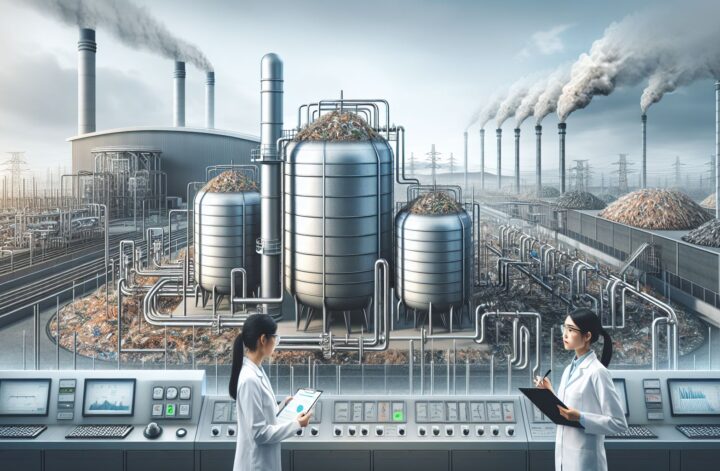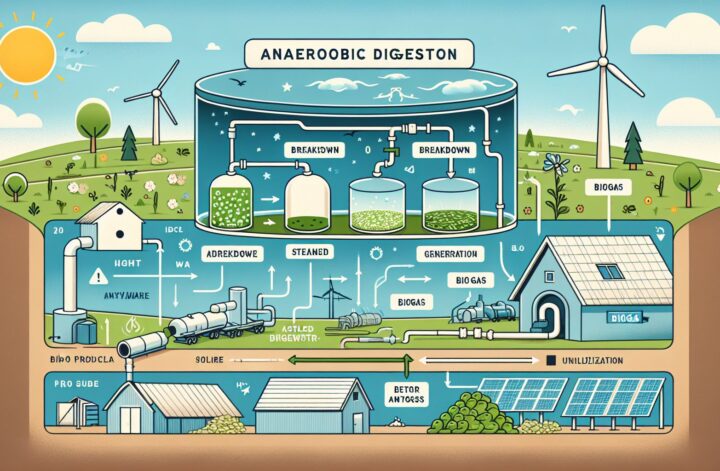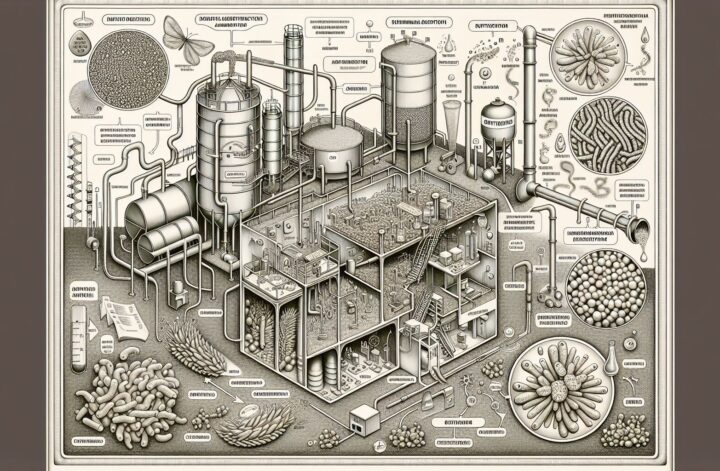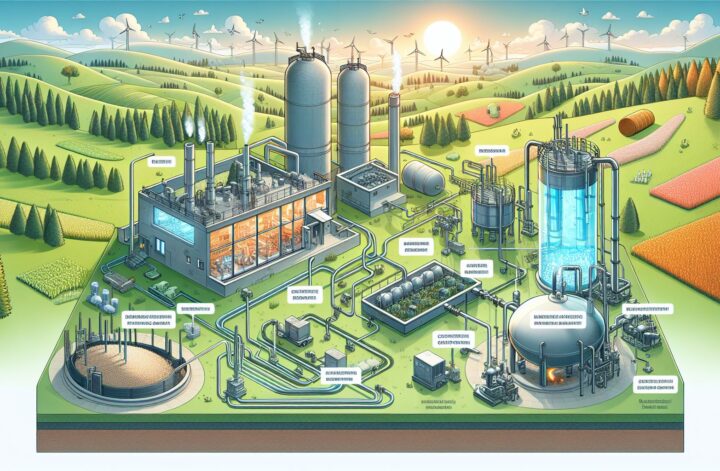Anaerobic digestion, a complex biochemical process in which organic material is broken down by microorganisms, can be seen as nature’s not-so-secret weapon in the fight against waste and the search for renewable energy. However, a powerful derivative of this process, high-rate anaerobic digestion (HR-AD), is not as widely recognized as it should be.
Among the numerous methods of treating organic waste and producing renewable energy, HR-AD stands out due to its efficiency, cost-effectiveness, and the potential for sustainability. With greater organic loading rates (OLR) and shorter hydraulic retention times (HRT), HR-AD units allow for the rapid degradation of organic matter, enhancing the production of biogas – a mixture of methane, carbon dioxide, and other trace gases, offering a promising alternative to fossil fuels.
The Mechanism of High-Rate Anaerobic Digestion
In HR-AD, organic waste is processed without oxygen, by a consortium of bacteria through a series of metabolic phases: hydrolysis, acidogenesis, acetogenesis, and methanogenesis. The result is the production of biogas, and a residual material termed digestate, which can be utilized as a bio-fertilizer.
In the initial stage of hydrolysis, complex organic compounds, like fats, proteins, and carbohydrates, are broken down into simpler molecules like amino acids, sugars, and fatty acids. This stage is followed by acidogenesis, where acidogens convert these simple molecules into volatile fatty acids (VFAs). The third stage, acetogenesis, involves acetogenic bacteria converting the VFAs to acetic acid, hydrogen, and carbon dioxide. The final methanogenesis phase involves methanogens that convert the earlier products into methane and carbon dioxide[^1^].
Advantages of High-Rate Anaerobic Digestion
Apart from the efficient conversion of waste into usable energy, HR-AD boasts various other advantages.
Reduced Sludge Production
By increasing the OLR, HR-AD reduces the amount of sludge produced during the treatment process. With shorter HRT, less sludge is retained in the system, leading to a reduction in sludge stabilization and disposal costs.
High Methane Yields
Because HR-AD utilizes higher OLRs and shorter HRTs, organic matter breakdown is accelerated, translating to increased methane yields compared to conventional anaerobic digesters[^2^].
Reduction of Greenhouse Gas Emissions
HR-AD captures methane—a potent greenhouse gas—that would otherwise be released into the atmosphere, providing an opportunity for carbon recycling and mitigation of global warming.
High Organic Waste Treatment
The high OLR utilized in HR-AD enhances organic waste treatment, allowing for more efficient utilization of the anaerobic digesters. This benefit is particularly crucial in areas with high waste output and limited space for digester installation.
Overcoming the Challenges
Despite its numerous advantages, HR-AD still faces a few challenges. These include:
Ammonia Toxicity and Sulfide Toxicity
In HR-AD, excessive concentration of ammonia and sulfide could inhibit the process by damaging the microorganisms involved in anaerobic digestion. However, this problem could be managed by carefully controlling the process and ensuring optimum conditions[^3^].
Volatile Solids Reduction
Optimizing VS (volatile solids) reduction could help maximize the efficiency of HR-AD. Further investigation into factors impacting VS reduction, including temperature, pH, and retention time, could improve the system.
A Path Forward
High-Rate Anaerobic Digestion represents a promising pathway in the world of waste management and renewable energy. Policymakers and industry stakeholders would do well to take a closer look at this technology, which offers cost-effective, environmentally-friendly, and efficient solutions to several pressing concerns.
Stakeholders in depleted sectors such as fossil fuel industries can also benefit from exploring the potential of HR-AD, either as a competitor or an auxiliary to their current operations. In the broader scope, HR-AD is a concrete step in reducing global greenhouse gas emissions and finding a sustainable route to waste management.
As we move forward in our global commitment to sustainability, robust, scalable, and sustainable solutions like high-rate anaerobic digestion serve as reminders of the dividends of innovation and investigation. Expanding our knowledge and improving our implementation of HR-AD may well prove invaluable in the critical task of crafting a sustainable future.
[^1^]: “Anaerobic Digestion Fundamentals.” U.S. Department of Energy. URL: https://www.energy.gov/eere/bioenergy/anaerobic-digestion-fundamentals
[^2^]: Amani, T. et al. (2010). Anaerobic Digestion from the Viewpoint of Microbiological, Chemical, and Operational Aspects – a Review. Environ Rev., 18: 255–278. URL: https://doi.org/10.1139/A10-011
[^3^]: Erguder, T. H. et al. (2001). Biological Ammonia Removal from Anaerobically Treated Wastewater by Conventional Activated Sludge. Environmental Pollution, Volume 113, Issue 3. Pages 365-371. URL: https://doi.org/10.1016/S0269-7491(00)00171-9




